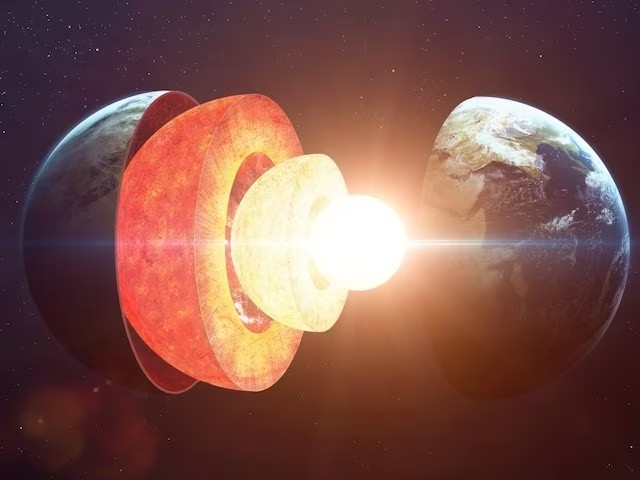According to a recent study, scientists have determined that the Earth’s deep core is slowing down and even traveling backwards. Since 1936, when Danish seismologist Inge Lehmann revealed that the Earth had an inner core, scientists have been studying the Earth’s core. Further details regarding the “backward movement” of the Earth’s core were disclosed in a research report that was published in the scientific journal Nature in June of this year.
According to a report by US network CNN that accessed the study, the researchers claimed that the Earth’s core has slowed down rotating to the point where it is now traveling backward relative to the fluid layers surrounding it.
Why is the Core Rotating in Reverse?
The broadcaster cited the Nature report and claimed that it supported the hypothesis that the earth’s core’s rotation slows down and is part of a decades-long pattern of slowing down and speeding up. It also confirmed that the core experienced a slowdown.
The results of the study, according to co-author Dr. John Vidale, Dean’s Professor of Earth Sciences at the University of Southern California’s Dornsife College of Letters, Arts, and Sciences, indicate that variations in rotational speed occur on a 70-year cycle.
“I think this really hits the mark after 20 years of debate on this issue. CNN cited Vidale as saying, “I think we’ve settled the argument about whether the inner core moves and what its pattern has been over the past few decades.”
Implications of a Slowing Core:
Located approximately 3,220 miles (5,180 kilometers) beneath the Earth’s surface, the solid metal inner core is encased by a liquid metal outer core.
At 5,400°C, the temperature of Earth’s inner core, which is mainly made of iron and nickel, is similar to that of the sun’s surface. The extreme heat and distinct inner core composition are essential to the geodynamic processes governing Earth’s magnetic field and geological activity.
The solid ball of molten metal at the center of Earth spins because of the strong force of the Earth’s magnetic field. The core is pulled downward simultaneously by the force of gravity and the flow of the fluid outer core and mantle. The push and pull of these forces causes fluctuations in the spinning speed of the core over many decades.

